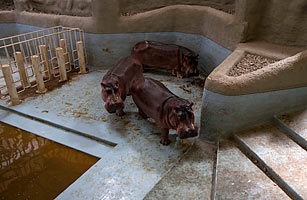
If you were to play word association with either Libya or Afghanistan in 2011, chances are that the word zoo wouldn't make the top of the list. But both Tripoli and Kabul's zoos played a small if significant part in the broader story. In Libya, the zoo was located in the former Gaddafi stronghold of Abu Salim, where the employees and — of course — the animals had to handle considerable food and water shortages. Ibrahim Basha, the head keeper for 24 years, said the Gaddafi regime frequently failed to make monthly payments, meaning that it owed the company that provided the animals' food more than $1.5 million. Even one of Gaddafi's sons, Saadi (who owned nine of the zoo's 19 lions and loved to check on their progress), stopped visiting. As for the zoo's employees, only 15 of the 100 were willing to work.
In Kabul, it could be argued that the worst was already over. Following the collapse of the communist regime in 1992, the Afghan civil war decimated the zoo; with nobody to feed them, the better part of 400 animals died of hunger. Yet the rise of the Taliban (it came to power in 1996) stopped the bleeding as the insurgents built new outer walls and gave food to the surviving animals. What's more, China and Pakistan have given animals as diplomatic gifts over the years, bolstering the number of both creatures and visitors, who, admittedly, visit as much for the shade afforded by the zoo as by a desire to spend time with the animals.